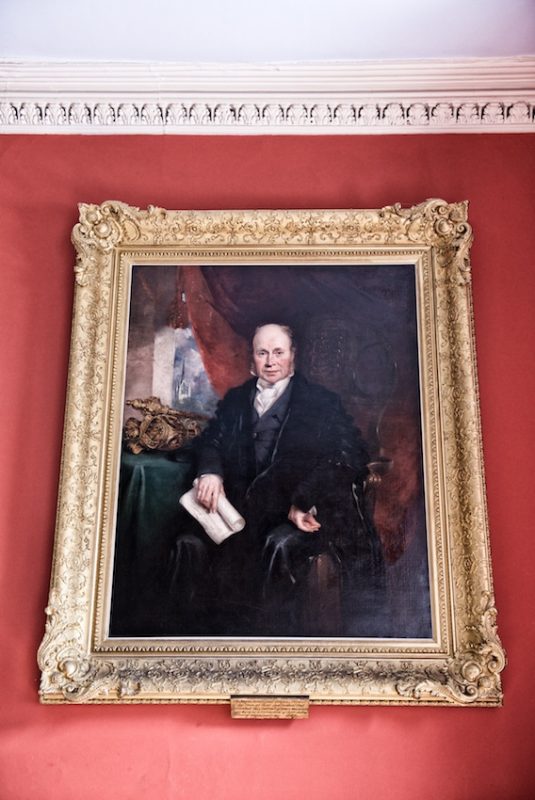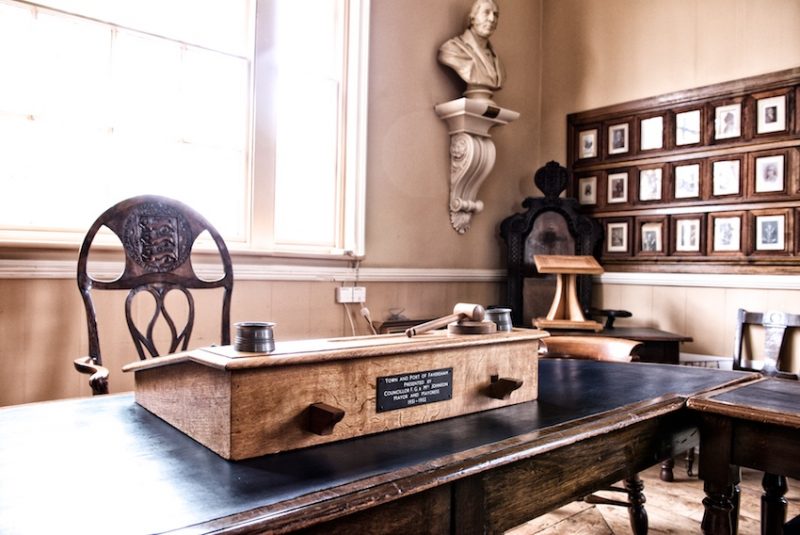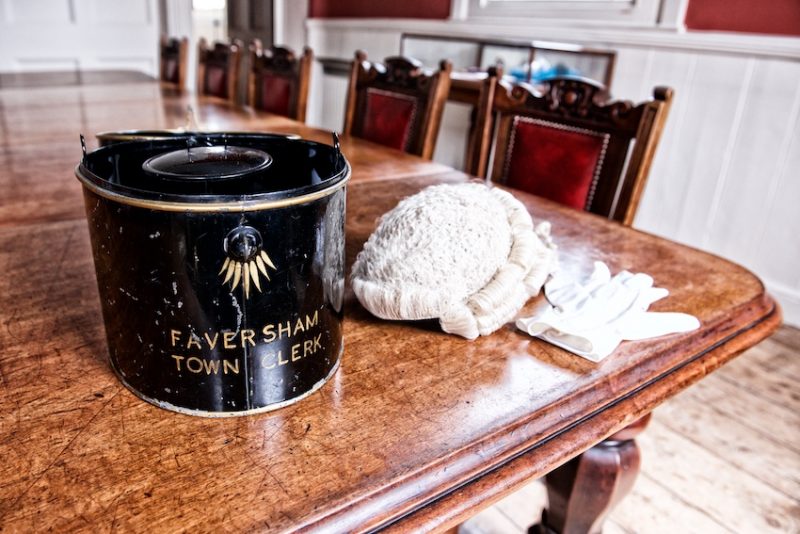The iconic Guildhall stands at the very heart of Faversham. A handsome building, it is symbolic of what is so special about this ancient market town. Located in Market Place, it was originally built as a market hall in 1574 by the people of the town and 13 nearby parishes. The ground floor with its timber arcades and octagonal columns bulging out at the bottom has been used by market traders for more than 500 years. It is now home to Richard’s plant stall on Tuesday, Friday and Saturday markets. What other market town in England can lay claim to such a thrilling tangible link with the Middle Ages? All over the country, similar towns have had their character woefully eroded by post-war planning.

The Guildhall stands at the heart of Faversham in the Market Place
Surprisingly it is the third Guildhall. Originally the centre of the town was on what was known as Guildhall Green in Tanners Street. The first Guildhall occupied the site of what is now the Gospel Mission Hall. We don’t know why the town moved its centre of gravity to Court Street. In 1547 the Corporation built a new Guildhall where the single-storey section of the Shelter Shop now stands. This was where Queen Elizabeth I was entertained on her visit to the town in 1572.
In 1603 the Council moved to the present Guildhall. Two hundred years later the Guildhall was gently classicised following a fire by rampaging youths celebrating one of Wellington’s victories in the Napoleonic Wars. Charles Drayson (1749/50-1830) designed a new upper floor with a large Venetian window and tower with a cupola and extended the building by two bays to the north. The clock on the tower is dated 1814 and bears the name of Francis Crow (1735/6-1835) who lived and worked opposite at 8 Market Place. Pediments at either end feature the town’s seal – virtually the same as the Royal Arms of England. Faversham is the only town in the country to enjoy this privilege. The building remained timber framed – soft wood from the Baltic imported via the Creek. Crow must have been a sensitive fellow to retain the medieval ground floor. What, one wonders, did the people of Faversham think of it at the time?

The Guildhall in 1829. The upper storey was rebuilt in 1814 after a fire caused by rampaging young men celebrating one of Wellington’s victories in the Napoleonic wars, What is remarkable about this picture is that all the buildings depicted remain extant today over two hundred years on

The wonderfully atmospheric interior of the Council Chamber, Faversham’s Guildhall.
To step into the Council Chamber on the first floor is to step into a microcosm of provincial town government. On one wall is a vast timber panel listing all the mayors from 2018 stretching all the way back to 1292. For those who know a smattering of Faversham’s history, several names leap out including Henry Wreight (1760-1840), a solicitor, one of the town’s great benefactors, a couple of Girauds, Thomas Napleton and Edward Jacob.

Henry Wreight, one of Faversham’s greatest benefactor’s. Wreights House stands to this day in the Mall
Ancient names such as John Faversham, Mayor in 1422 and Seman at Tonge, Mayor in 1401 and 1403 add a delightful ancient note. On the opposite wall is a fine collection of photographs of mayors from the present day going back to the early 19th century. They are splendid figures sporting handlebar moustaches, long Old Testament prophet-style beards and all are imbued with the gravitias of their position.

A splendid Victorian mayor of Faversham

Every single Mayor of Faversham dating back to 1292 are recorded on this board
A few 18th century mayors are depicted as silhouettes. An interesting observation is that fur lined robes and clanking Mayorial chains of office don’t make an appearance until the Victorians. Perhaps they are an example of the Victorians’ love affair with medievalism. Think of the extraordinary Eglington Tournament staged in 1839 by many aristocrats wearing replicas of medieval armour.

Victorian Mayors of Faversham

The Guildhall was used as a Court until 1942 when the Faversham County Court was abolished and the jurisdiction transferred to the Canterbury and Sittingbourne Courts. It was also used by the Commissioners who regulated the Creek until their powers were abolished in 1951 and the jurisdiction transferred to the Medway Ports Authority.

A vignette of the Council Chamber of Faversham’s Guildhall bursting with civic pride. A bust of the 1st Lord Harris (1746-1829), appointed Commander in Chief of the Madras Army. He bought Belmont House, nr. Faversham in 1801
From 1836-1942, Faversham Town Council held all its meetings and ceremonial occasions in the Guildhall. In 1942, the Council purchased Gatefield House (now the Alexander Centre) and held its meetings there. Alas in 1974, after 700 years of successful self-government, Faversham lost its Borough status in the local government upheaval.

An historic wig and its handsome tin box are redolent of the Guildhall’s history

A handsome Victorian clock almost certainly from Faversham, keeps time in the Council Chamber
However, partly thanks to the efforts of the Faversham Society in alliance with Amersham Urban District Council in Buckinghamshire, provision was made for smaller towns to have their own ‘successor parish councils, usually known as town councils, with the important concession that former boroughs, such as Faversham, could retain their Mayors. Faversham Town Council has now returned to the Guildhall and holds its meetings there.
From January 2019 the Guildhall will be available to rent for weddings. Further details: Adrienne.begent@favershamtc.co.uk
Hurrah for the Guildhall and all that it embodies.
Text: Amicia. Photographs: Lisa